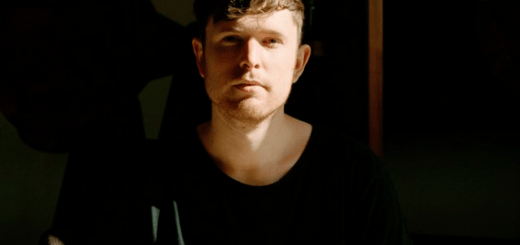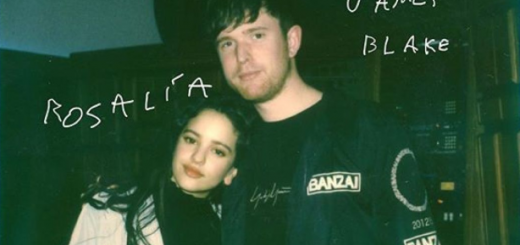Lindisfarne II by James Blake Lyrics Meaning – The Poetic Exploration of Restraint and Vulnerability
Lyrics
Beacon don’t fly too high
Beacon don’t fly too high
Cute but I’ll take the bus
Beacon don’t fly too high
With fees and favors gone
Cracks in savers pass
And a white that sometimes shone
Beacon don’t fly too high
Wanton borrowed gun
Wanton borrowed gun
Beacon don’t fly too high
Beacon don’t fly too high
Cute but I’ll take the bus
With fees and favors gone
Cracks in savers pass
And a white that sometimes shone
Beacon don’t fly too high
Wanton borrowed gun
Beacon don’t fly too high
Wanton borrowed gun
In the haunting echoes of James Blake’s ‘Lindisfarne II,’ listeners are ushered into a space of introspection and intimate reflection. The track, which hails from Blake’s self-titled debut album, serves as a portal into the complexities of human emotion, juxtaposed against a backdrop of minimalist electronic landscapes. Through his poetic lyricism and ethereal sounds, Blake invites us to ponder the threads that tether us to our own sense of humanity and restraint.
Rather than offering a crystal-clear narrative, Blake’s ‘Lindisfarne II’ is enveloped in ambiguity, its meaning shimmering just below the surface of its lyrical sparsity. It’s a puzzle that fans have turned over in their minds, a layering of interpretation that grants the song a timeless complexity. Let’s embark on an odyssey to unravel the delicate threads woven into the fabric of this evocative piece.
A Beacon of Caution in a High-Flying World
The repetition of ‘Beacon don’t fly too high’ serves as a mantra throughout ‘Lindisfarne II,’ a somber warning whispered against the temptation of hubris. In a world where ambition often fuels a perilous ascent, Blake’s lyrics come across as a tether or grounding force, cautioning against the Icarian impulse to soar too close to the sun. It’s an analogy for the human condition, an acknowledgment of the bounds within which we must operate to maintain balance.
The beacon, typically a signal of guidance or warning, is implored not to exceed its reach. It’s a plea for moderation in a society characterized by excess and overextension. This call for restraint resonates deeply in an era where the consequences of our collective actions loom large, a reminder that care must be taken even when — or especially when — pursuing the heights of our ambitions.
The Intimacy of Public Transit: ‘Cute but I’ll take the bus’
In sharp contrast to the ethereal warnings against ambition, ‘Cute but I’ll take the bus’ grounds the song in the mundane. What better place to witness the hum of humanity than through the windows of a city bus? James Blake pulls us from the clouds and places us firmly in the ordinariness of life. The line reads as an embrace of simplicity, a conscious choice to engage with the world at eye level.
In doing so, Blake may be arguing for the virtue of the path less glorified, suggesting that there is something to be gained from taking the time to move through the world at its own pace. It is as if by rejecting the high-flying beacon, one is choosing to find depth in the everyday journey, an exploration of the paths we tread in favor of those we might soar above.
The Fault Lines of Financial Follies
With ‘fees and favors gone’ and ‘cracks in savers pass,’ the song ventures into the realms of economic metaphor. Here, Blake touches upon the fragility of financial security, the precariousness of savings and the transactions that often leave individuals exposed. There’s a commentary on the modern economic landscape, where even the savviest can find themselves vulnerable to unseen fault lines.
The image of a ‘white that sometimes shone’ might speak to the intermittent flashes of hope or success in one’s financial journey. Yet, these moments of brightness are fleeting, overshadowed by the lyric’s repeated reminder of limitations and the potential for downfall. ‘Lindisfarne II’ thus transforms into a canvas for pondering the uncertainty of contemporary economic existence.
Dissecting the Song’s Hidden Heart
Amidst the refrains and poetic images, James Blake weaves a subtextual narrative that might escape the first listen. The ‘beacon’ could be a metaphor for the self or another — a focal point for reflection. The exhortation against aiming too high may not just serve as sage advice, but as a reflection of the artist’s personal apprehensions or a universal human anxiety.
Moreover, the ‘wanton borrowed gun’ suggests themes of power and responsibility, the delicate balance between control and recklessness. In a sense, the song can be perceived as a meditation on the tools we employ — whether ambition, finance, or influence — and the cautious stewardship required when wielding them.
Echoes of Memorable Lines and Their Reverberations
Though sparse, the lines of ‘Lindisfarne II’ linger long after the track concludes. Blake’s repetitive phrasing creates a hypnotic quality, etching words like an incantation into the memory of the listener. The simplicity of the lyrics belies their depth; it is within this simplicity that contemplation thrives.
Each phrase becomes a capsule of feeling or thought, dense with potential meaning. For a song allusive and enigmatic, the true beauty lies in its ability to resonate differently with every individual who experiences it. ‘Lindisfarne II’ is a cryptic composition, a song whose minimalistic nature invites endless interpretation and whose lines echo in the spaces between our thoughts.








